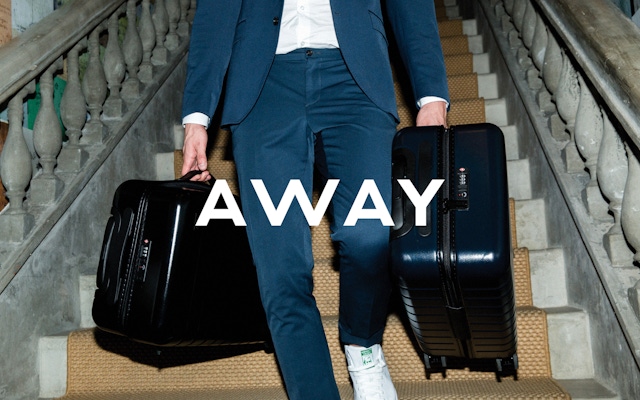

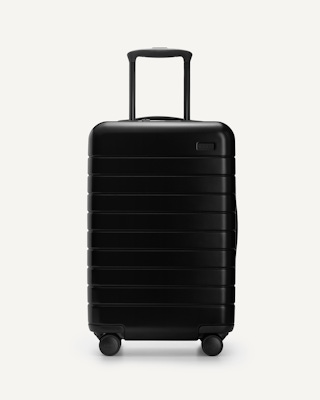
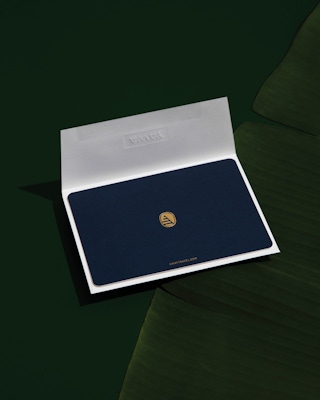
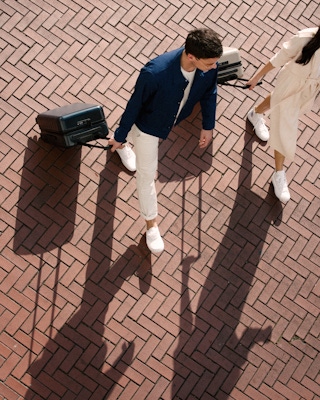
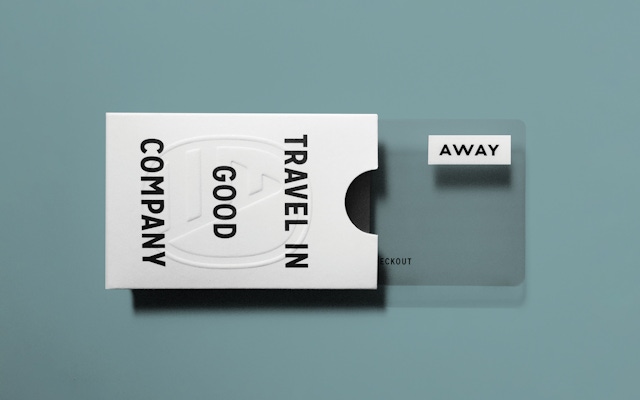



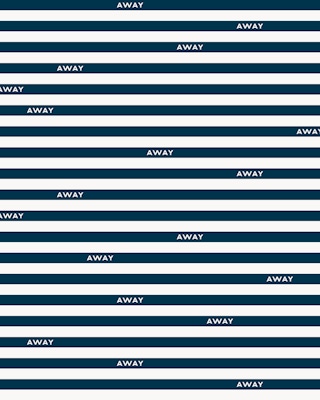
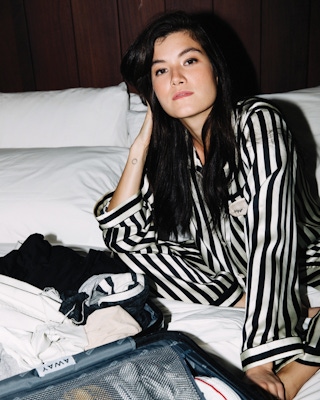



Seeing a Large Market and a Staid Category
Away’s founders set out to create a disruptive travel brand ©. They were attentive to the main issues of the industry at large, from the unpleasant buying experience and low brand loyalty to the challenge of going against giant competitors who own the lion’s share of the market, like Samsonite. Combo started working with Away to rethink everything from the product and how it interacted with the larger travel category to the potential for category disruption and expansive brand world building.
Identifying a New Audience
At the time, the luggage industry revolved around one type of consumer: the business traveler. Creating products for this audience was about efficiency, streamlined designs and signaling an air of corporate success. However, industry trends had yet to respond to an emerging market: the millennial adventurer. Data collected from several dating sites reported that user profile pictures depicting some aspect of travel were 30% more likely to get clicked through, illustrating the significant emphasis younger adults were assigning to travel. For this emerging consumer base, travel was not simply an assigned activity, but an interesting part of one’s personality and a marker of open-mindedness. Combo helped Away tap into the massive potential of this new market by building a brand that makes people feel special, respected and able to embody the romantic travel experience once reserved for the wealthy and elite.
Travel photos receive 30% more likes than the average photo.
Building a Lifestyle Brand
The Combo team worked to reposition luggage from a travel product to a lifestyle, which enabled the company to open up the category in a way that hadn't been done before. It was one of the first examples of a D2C company leaning into the fashion-lifestyle playbook. Instead of communicating exclusivity, the brand strategy revolved around making travel feel premium but offering a well-designed yet accessible product.
Shifting the Product Strategy
Initially, the Away bag was focused on technological features. Combo’s involvement shifted the design to focus more on form than feature. Strategy informed product design, but shaped the product to be in service of the brand rather than central to it. To illustrate this distinction, when the TSA banned suitcases outfitted with batteries, several of Away’s competitors whose brands relied on a battery-equipped product were forced to fold, but Away was able to survive. While batteries were part of Away’s early product design, the brand itself was about the broader idea of travel as a lifestyle, and six months following the TSA ban Away was valued at $1 billion.
Product Development and Design
Combo’s design team was heavily involved in refining early product designs into a suitcase that reflected the brand identity and target consumer. From the interior features to the exterior silhouette and colors, the product was designed to be the millennial vacation accessory. Combo designers attended factory visits in China, took the product through multiple iterations and helped launch it to market.
Launching the Brand
Combo also created all the creative elements for launch including photo shoots, original asset creation, and the overall design to bring Away to market. All of these elements were then applied across channels to help make Away achieve their goal of disrupting the travel category.
Away has become one of the jet set's favored travel brands.
New business: Connect with a partner.
Job inquires: View our handbook.
Newsletter©: Sign up.
Combo
76 Bowery, 3rd Floor
NYC, 10013
Social Media
Instagram, Behance, LinkedIn
View our show reel:
Watch video
General inquiries:
hello@combo.co
Media inquires:
press@combo.co